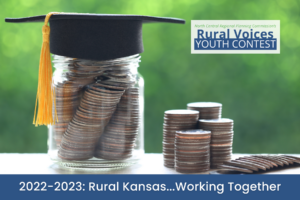 Congratulations to the 2022-2023 Rural Voices Youth Contest winners!
Congratulations to the 2022-2023 Rural Voices Youth Contest winners!
About the Contest
The NCRPC sponsors the Rural Voices Youth Contest each year to engage high school seniors in North Central Kansas in thoughtful reflection on rural Kansas and to promote a discussion among citizens based on their insights. The 2022-2023 theme was “Rural Kansas…Working Together.”
Rural Kansas: Cooperation and Dedication
By Jane Letourneau
“What’s your load of limestone?” This seemingly odd, yet relevant question for the parishioners of St. John the Baptist Catholic Parish, has been asked over this past year because of a restoration project that began in 2022. A little over one hundred years ago, the same church in the small, rural community of Beloit went through a similar process; but the parishioners had to hand-quarry limestone to build it. Since the beginning of the recent restoration, parishioners of the rural community have come together and are asking themselves and each other what their contribution, whether a financial gift or one of physical labor, will be.
In the year 1900, construction began in the little town of Beloit to build a better, more beautiful Catholic church. Restoration efforts were led by Monsignor Hietz, and his lofty dreams may have seemed like outlandish tales to some. With determination, his dreams were eventually
fulfilled, but it was not by his own drive and determination. The whole community of St. John’s Catholic Church put their heads together, and got to work. It was no easy task as the church was built with limestone that was quarried from nearby farmland. “ Tools and equipment in the early 1900s were primitive. Imagine quarrying thousands of loads of stone with hand tools and hauling stone and sand in horse-drawn wagons over trails and dirt roads” (Duskie). As was stated in an article about the project, “Anton Eilert assisted in the construction by hauling rock from a quarry eight miles northeast of Beloit. He hauled not only the thirty loads, stipulated by the pastor, but, because of his age, he was unable to quarry rock, so he compensated for this by hauling eighty loads”(Duskie). In the year 1904, the massive church was finished. Sacrifice, grit, and teamwork were major influencers and direct contributors to the success of Monsignor Heitz’s lofty dreams. Without the strong community of Beloit working together, it would have been impossible.
Fast forward nearly 119 years later, and a peaceful Sunday afternoon in Beloit was disturbed by the wailing of fire truck sirens. The upstairs church library was on fire, and a curious and anxious crowd had gathered in the parking lot across the street. Thankfully, the fire had been discovered before spreading to the rest of the church, but the damage had been done. Smoke had filled the space, and the stairs leading to the library and beautiful choir loft were charred. The emergency was, of course, unexpected and sudden. But it fueled a series of discoveries about the state of the more than one hundred-year-old church. And the question loomed: should the parish patch up the damage, or begin again and work together as their ancestors had years ago?
The decision was made to tackle complete restoration of the beautiful building rather than do a temporary patch-up job. Fundraising began, and a significant amount of money was needed for the project: three million dollars. But St. John’s parish community was ready for the challenge. Shae Johnson, the Communications Director for St. John’s Parish stated, “…when we started the campaign in May of 2022, we started with around $300,000 from the fire fund that rolled over into the restoration fund. With that in mind, we got to the 2 million mark in August of 2022, so it took 3 months to get there. It took 7 months to raise $2.9 million… from May 15 to December.” Working together was not only demonstrated in that of financial giving, but also physical labor. Needing a temporary location for the church, an old Dollar General store that had been out of business for several years was selected. Though it was not ideal, the space was large enough and it was decided to move all of the old church pews into it for seating. The job was completed in just one afternoon, and Shae Johnson again stated that, “Approximately 140 helped with the Dollar General move.” It has been inspiring and encouraging to watch the small parish community in Beloit, Kansas work together in such a way by their donations, physical labor, and campaigning efforts along the way.
This event is only a glimpse into the generosity and hard work of rural Kansans. As a whole, we are determined, strong, and ready to help each other in times of need. I have witnessed several instances where someone new has moved to my community, and a huge amount of help comes pouring in to make their transition from one place to another as pleasant as possible. Whether it be moving furniture or making meals, the generous support to those who are new in town is often overwhelming. Rural Kansans also are ready to help a neighbor with their work; especially when harvest is in full swing. With generous hearts and a willingness to serve, Kansans can be seen supporting one another in many instances, and welcoming one another with gracious attitudes.
My community of Beloit, and more specifically my parish community of St. John the Baptist Catholic Church has done an inspiring job of working together in the past year and a half. Without the love for our church and cooperation with one another that has occurred, the financial support and physical labor that has come pouring in would not have been possible. Rural Kansas was seen working together in the early 1900s when Monsignor Heitz decided to restore St. John’s church for the first time. The labor that has gone into our restoration looks different now than it did one hundred years ago. But it is obvious that Kansans are still working together in many inspiring ways as St. John the Baptist Catholic Parish works toward complete restoration. Not only our parish community, but all of rural Kansas can be seen helping one another when support is needed in instances such as helping a community member move in, and assisting a neighbor at harvest time. The restoration of St. John’s Church is only a glimpse into the ways that Kansas can be seen helping one another and building strong communities around cooperation and dedication.
Work Cited
Duskie, Rev. Monsignor John A., P.A., J.C.D. “Our Church A Mighty Fortress: The History of St. John the Baptist Parish, Beloit KS 1869-1982”
Rural Kansas… Working Together
I wrote a book. In fact I have written and illustrated two children’s story books. As a self-published author for the last three years, I have been marketing and selling these books on my own, without the help of a traditional publisher. Currently I have sold over 2,000 books, and all but a couple hundred have been direct sales, not sales from online places like Amazon, Walmart.com or other online dealers. Although I’m not making millions, I am making enough to cover all my publishing expenses and put away some money for college. Overall, I consider this experience of creating and marketing children’s books a success. I want to share with you why I think this success has been possible: because of the support of my North Central Kansas community.
I wrote and illustrated my first book as a sophomore in high school in a project-based learning class. The encouragement I received from family and friends as soon as they saw my finished product motivated me to pursue publishing my book. The project was a high-school wide endeavor and finalists were chosen to present in front of the high school. Those finalists were featured in our local paper: The Washington County News. And that’s how it all started… Once the news got out, my book took off. I had people stop me in the grocery store, talk to me at ball games, catch me on the street when I was out walking my dog… All of them wanted to congratulate me and purchase my books.
Because of my books I have realized the beauty of living in a small community. We are a family. I am their native daughter. My success is their success. They talk about their neighbor, the girl from their school, their student, their friend’s daughter, the Kady Toole girl from their town, the girl from their county and even the girl from their state who wrote and illustrated the children’s books. They share my story with others and are proud of my accomplishments because I am “one of theirs.”
Let me share some specific stories of how my community has rallied around me in this process.
I have lived on the same street in Washington, KS since I was six years old. I have played on this street, shared cookies and treats, and visited with our neighbors all of those years. They have watched me grow up and have seen the good, the bad, and the ugly. Down a few houses on my street lives my wonderful neighbor Patty and her husband. This 80-year-old fireball has been a pillar of our community for years. She is personally responsible for selling over 30 of my books. She has shared them with her daughter who jumped on the bandwagon and now shares books with her friends in her Arizona community. She’ll call or text me and say, “I need some more of your books.” Who needs a publishing house when there are Patty’s right next door?
Traci is our elementary school’s self-proclaimed “library lady.” She knows everyone, everywhere. Traci reads my book to her classes, keeps a plush doll of the dog in my book in the library, initiates asking the school board if I can sell my book at our Scholastic book fair, and tells people about me whenever she can. Because of Traci, I have my book in school libraries in Germany and all over Kansas. Because of Traci, I even ended up doing a school author visit at Hickok Elementary School and now over 40 kids in Ulysses – in the southwest corner of Kansas – own my book.
The stories aren’t just limited to people, local businesses have enthusiastically supported me as well. The Washington County Hospital purchased copies of my first book to put in their “new baby” baskets. The Friends of the Library club purchased books for prizes for the summer reading program. Styled by R, a local boutique, invited me to do my second book release in their shop downtown as it was a perfect location. The list could go on and on.
This community spirit of helping out one of their own goes beyond just my small town – it extends to my county and all of North Central Kansas. Marcy, the librarian from Marysville, KS – a slightly larger community just 20 minutes to the east, featured my book in the very first Story Walk presented by their library. Their local high school KAYS Club raised the funds to put in a Story Walk in the city’s park, and instead of choosing a classic book, they chose mine – because I am a local author that they wanted to support. What a blessing! And this blessing just kept on giving. Because of the Story Walk, I was asked to speak at the Marysville Rotary club and to give a presentation on creating and marketing my book. And because of that presentation, Blue Valley Technologies out of Home, KS – a tiny town just east of Marysville – chose my book to include in their Christmas Giving Tree baskets this year for over 100 families in the area.
I have visited over 20 public libraries, 6 schools, 6 day cares, 3 preschools, 7 area clubs, had 6 book signings, and even participated in a parade in the last two years. I have been in our local paper at least three times, been interviewed by local radio 5 times and been on the Topeka television station once. All because I am a local author and illustrator, and people are excited to share what is going on with my book. This is the beauty of our North Central Kansas community. They truly want to see me be successful.
Although big cities would have more people available to hear about and purchase my books, I do not believe that I would have experienced the success in those locations that I have had being a member of my small North Central Kansas community. The sense of family and being “one of their own” leads my community to share and promote my books with pride because I am one of theirs. In a big town I am just another person trying to make a go of it. I live in a town of under 1000 people and although there is no way of proving this, I am pretty sure most of those households own one of my books.
I hope others see what I am doing and realize that they can jump out on their own and try something unique, knowing they will be completely supported and encouraged by their community. Not just through their words but also through the enthusiastic purchase and use of their product or service. I truly believe that my success is directly related to being a member of my small, rural, North Central Kansas community.
I am truly blessed and honored to be a part of my community, and my goal is to do everything I can to make these wonderful people proud of the books I create. Their encouragement and support make me want to do the best I can, not for myself, but because I represent them. I represent what North Central Kansans can do because we do it together.
Check back in Fall 2023 for details on the 2023-2024 Rural Voices Youth Contest.
 Dreaming big, setting goals, making bold plans for the future — these actions all can play an important role in community or organization success.
Dreaming big, setting goals, making bold plans for the future — these actions all can play an important role in community or organization success.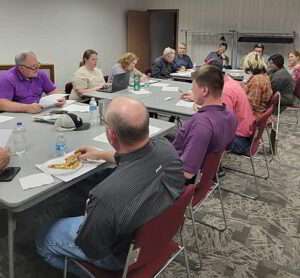

 A pilot program intended to strengthen housing in rural communities recently launched its second year. NCRPC is administering the program — called the NCRPC Housing Initiative — through a partnership with the
A pilot program intended to strengthen housing in rural communities recently launched its second year. NCRPC is administering the program — called the NCRPC Housing Initiative — through a partnership with the 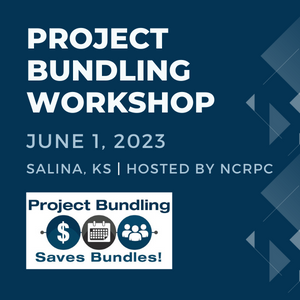
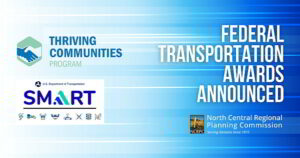
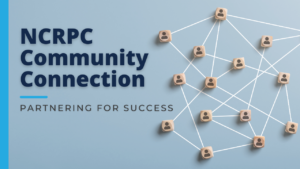
 Congratulations to the 2022-2023 Rural Voices Youth Contest winners!
Congratulations to the 2022-2023 Rural Voices Youth Contest winners! Financial incentives offered through the Washington County Home Ownership Pilot Program assisted in the purchase of 10 homes in the county from June to December 2022.
Financial incentives offered through the Washington County Home Ownership Pilot Program assisted in the purchase of 10 homes in the county from June to December 2022.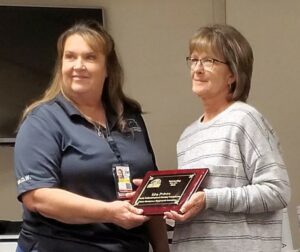
 NCRPC is now hosting free, virtual training courses covering a wide range of topics. Courses available on the training website include a remote work series and a comprehensive rural grocery training series. In addition, some recorded nonprofit board development trainings that were offered in 2021 and 2022 are also archived on the site.
NCRPC is now hosting free, virtual training courses covering a wide range of topics. Courses available on the training website include a remote work series and a comprehensive rural grocery training series. In addition, some recorded nonprofit board development trainings that were offered in 2021 and 2022 are also archived on the site. Many State and Federal awards require entities to have a Unique Entity Identifier (UEI) assigned by the Federal System for Award Management website (
Many State and Federal awards require entities to have a Unique Entity Identifier (UEI) assigned by the Federal System for Award Management website (